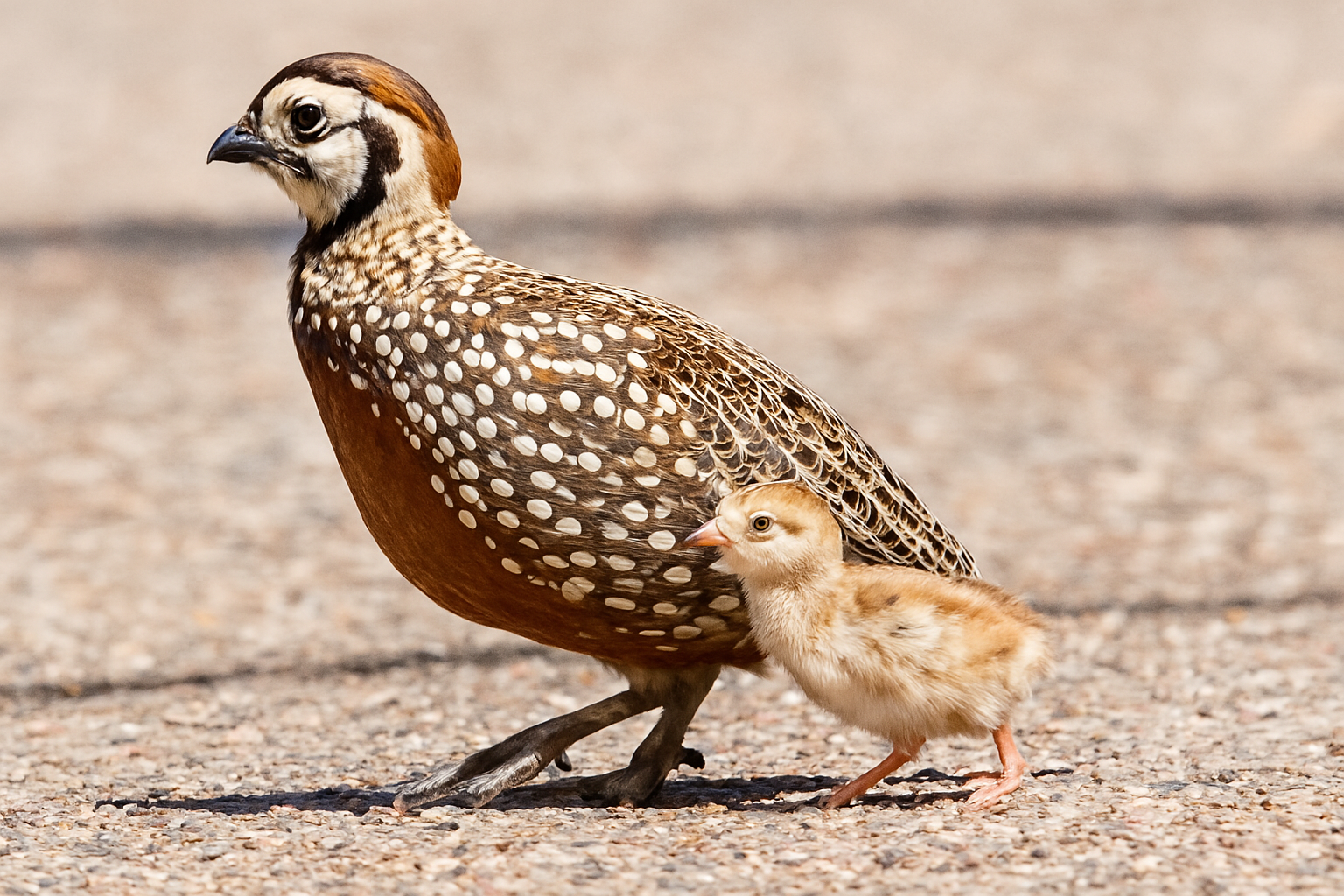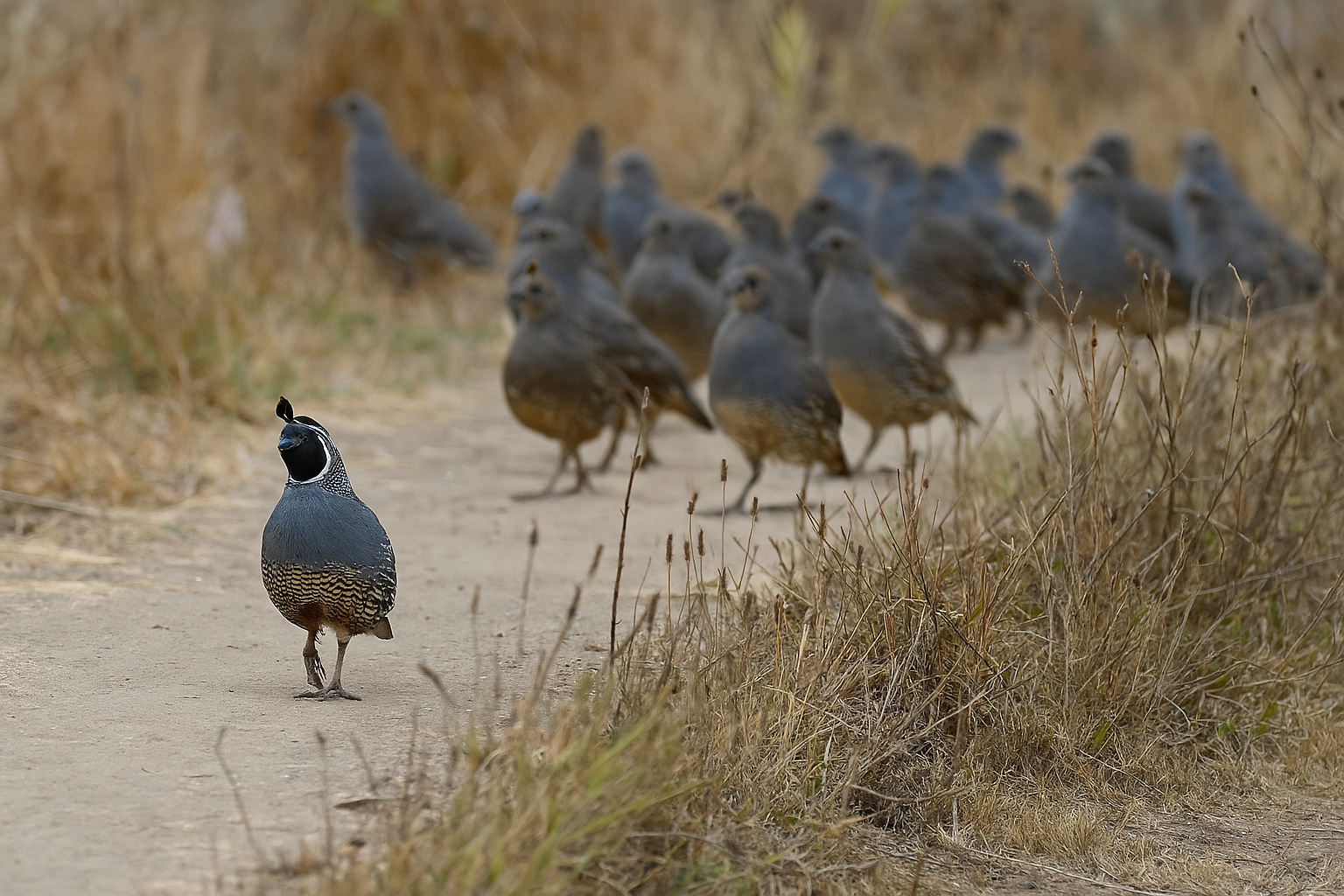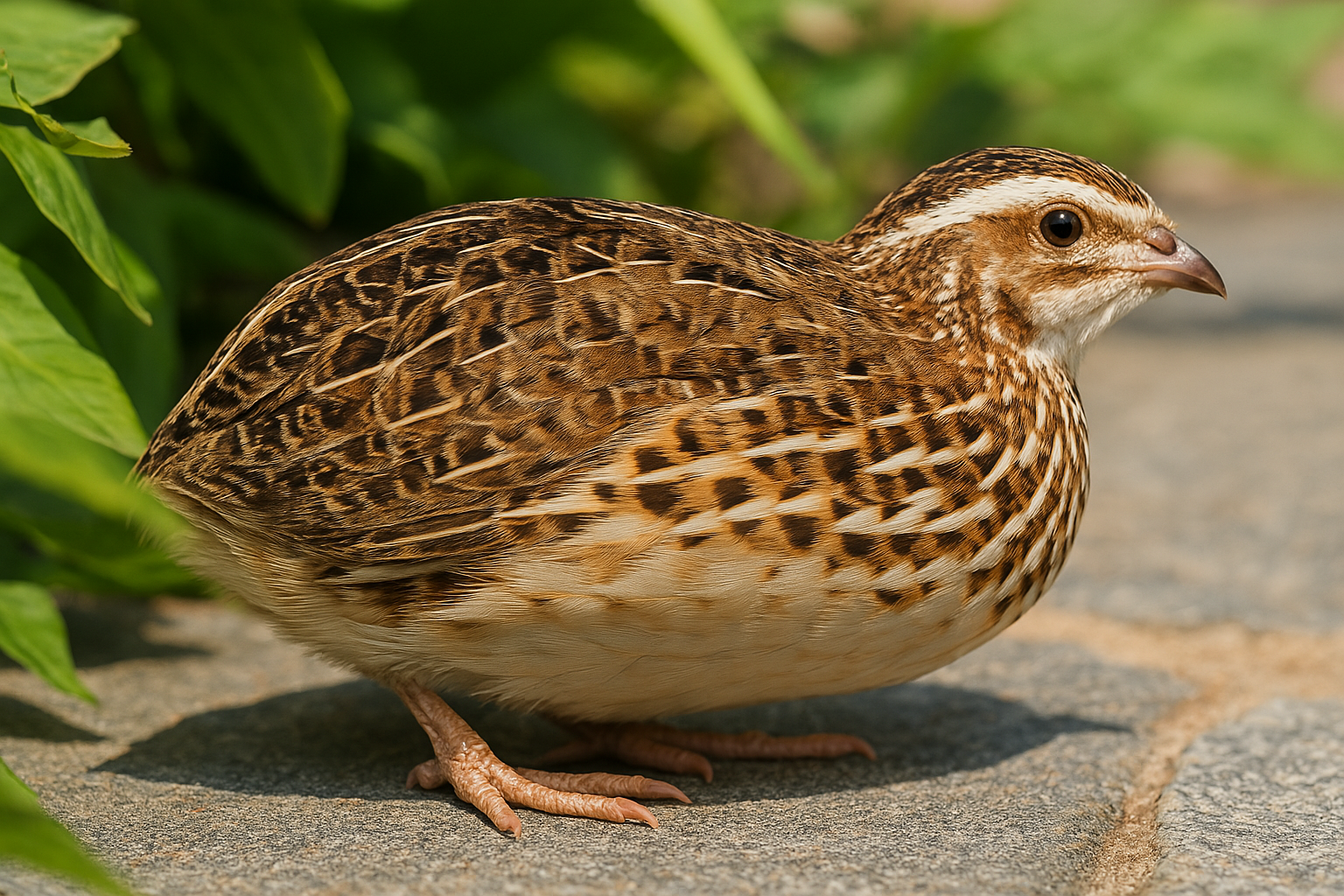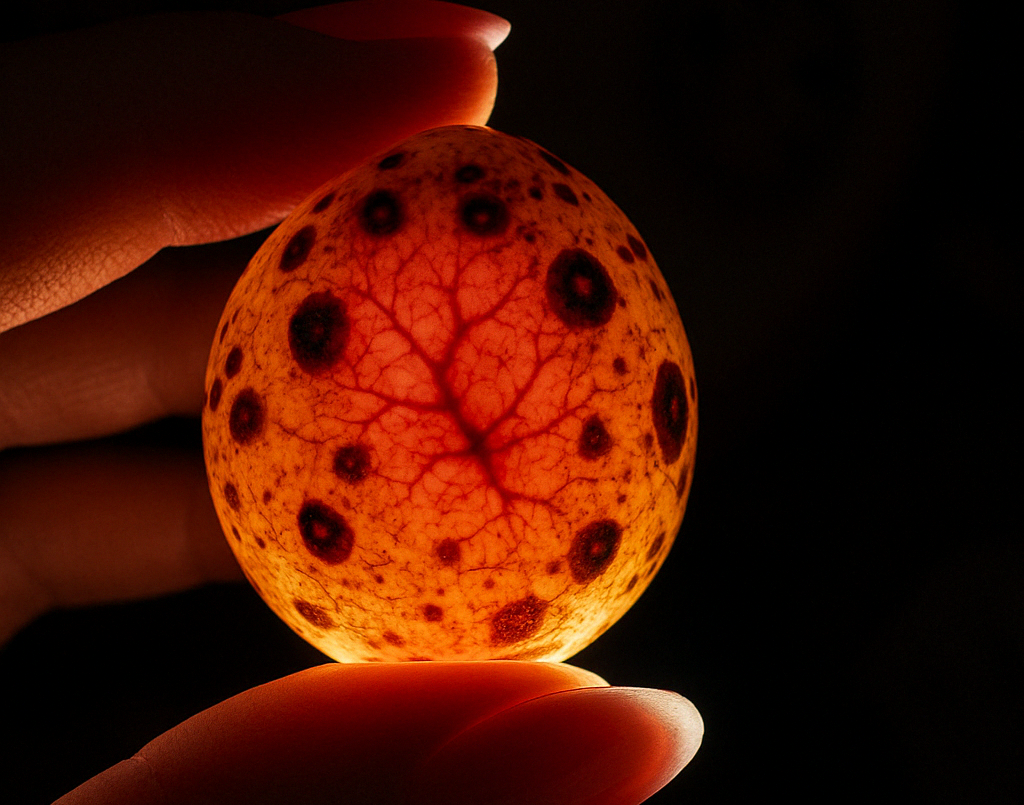What Is a Quail?

Quail Classification
Quails are not a single species but a collective name for
several genera of birds that are broadly divided into two
groups.
Old World Quail: These species are primarily
found in Europe, Asia, and Africa and belong to the family
Phasianidae. Examples include the common quail (Coturnix
coturnix) and the Japanese quail (Coturnix japonica).
New World Quail: Native to the Americas, these
birds are classified in a different family, Odontophoridae.
Notable species include the Northern Bobwhite (Colinus
virginianus) and the California quail (Callipepla californica).
This taxonomic division reflects differences in anatomy,
behavior, and habitat preferences, even though the birds share
many common characteristics.

Behavior
Ground Foragers: Quails spend most of their time on the ground, where they forage for seeds, insects, and other small invertebrates.
Flocking: Many quail species live in small groups known as coveys or flocks, which can help reduce the risk of predation.
Short Flights: While not known for long-distance flying, quails are capable of sudden, rapid bursts of flight, especially when startled. This ability helps them escape danger quickly.
Quail Calls: Some quail species have distinctive calls that are often more noticeable than their fleeting presence. For example, the characteristic “bob-white” call of the Northern Bobwhite has made it a well-known sound in rural areas.

Explore Quail Species
.png)
Male or Female?
It can be tricky to distinguish between male and female quails, especially in species where the differences are subtle.
Read more
How to Candle Quail Eggs
To determine if your quail eggs are fertilized, you can use a method called candling. This involves shining a bright light through the egg to observe its contents. It's best performed in a dark room using a small, powerful flashlight or a specialized egg candler.
Read more